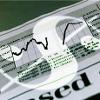Edit Your Comment
Trying to become a full-time trader
Uczestnik z Oct 15, 2012
5 postów
Oct 26, 2012 at 12:02
Uczestnik z Oct 15, 2012
5 postów
At the moment, I'm basically using demo accounts to learn about manual trading and to really get an idea for how the market moves. I'm looking to move to a real (but very small) account soon as I feel putting real money into the market makes you obviously think a lot different to if you are demo trading.
I'm not very happy with my results so far, and I think this is mostly due not finding a system that really works for me. I'm using mostly weekly and daily pivot point lines on a MTF analysis and trying to spot opportunities using these.
I don't believe too strongly in the plethora of indicators which are available as these are all lagging indicators and only mathematically show you what has happened up until the point you are looking at. Really, the value of a 50 ema vs 25 ema in my opinion doesn't tell you much more than you can actually surmise looking at the chart over the last 50 periods with your own eyes. Which direction is the trend? Is it speeding up or slowing down? (Or converging or diverging on a MACD?). That's it really. Typically I've found that the 25 ema diverges furthest from the 50 as the market races towards a level of support or resistance, then sits at this level waiting for the 50 to 'catch up' before either breaking, faking or reversing at very often a PP line. I'm also guessing that those who have tried automating any sort of system based on MA lines will undoubtedly have found this out quite severely as I have.
So really, what I'm looking for is input from the successful traders out there, and maybe to help other traders who are in the same position as I am. Here is the plan / position I am in at the moment with my trading.
1) I need to find the trade 'time-frame' which best suits me. I personally much rather have trades run for max of an hour. I like to see results straight away and I believe that the longer a trade runs for, the more variables and chaos is added to the system, meaning that your original reason for entering a trade are minimised as time progresses. In saying this, shorter timeframe trades are 'more expensive' as the movement compared to spread is lower, meaning that beating the broker becomes a larger part of the trade. I'm still to find a happy medium.
2) Continue investigating ways of judging isolated currencies. The reason the EURJPY pair is moving up is because the EUR economy has a higher demand for their currency, or the future looks rosier than the JPY economy. At the same time though, both economies may be much weaker than every other FX traded economy/currency, meaning that the probability of trading any other currency against the JPY would be a better option as there should be a larger divergence in the two currencies.
3) Continue to utilize multi-time-frame analysis. MTFA sure helps to paint a 3D picture of how a pair is behaving much better than in one time-frame. I'm not sure if it would even be possible for a manual trader to be successful long-term without MTFA.
4) Find a much better Entry and Exit strategy. At the moment, I've tried only a few manual strategies, but am mixing them up and not performing them in any proper manner. I feel I really need to spend more time focusing on one strategy at a time (obviously with the view of improving and modifying each slowly as I go) and finding the one that really works for me. I've found pivots to be mildly successful, and the small amount of Elliott Wave trading I have attempted has been dismal, more of a negatively loaded coin toss really.
5) Find the right time to trade. At the moment, I am focusing on the start of the London session due to the increased volatility, and therefore better value entries compared to spread. This works out well for me as it is around the 5-6pm mark here in Australia. It means that after work I can spend a few hours working at the best time of the FX day. The issue is, I'm assuming that this is a good thing. Perhaps the volatility also makes the markets more erratic, maybe between the London and NY opening the markets perform in a more volatile but 'better behaved' manner. I'd really like to hear peoples ideas on this with respect to their trading system.
6) Learn to actively deal with the emotions of this beast! It appears that 3 of my 4 trades I've entered today are all going to come back winners and that fills me with hope that I'm actually getting somewhere in this Forex game. In an hours time, I have lost two of these and I'm feeling terrible about losing another 2% on my 'imaginary' account. I really need to distance myself from the task at hand and stop letting it affect my emotions. This especially goes for the times when I start 'searching' for trades, as opposed to judging the possibilities which are currently apparent within the confines of my current trading system.
7) I need to continue to focus solely on each trade as 1% risk to my account. I still don't understand this fascination with pips! Unless you are entering into every trade with a fixed lot size, which goes against EVERY money management guideline (and logic for that matter), then pips are totally irrelevant. Really, it's possible (though an extreme example) to be up 50,000 pips at the end of a month, but still blow your account. There should be a new convention where people discuss the units of risk they have returned on their account, or what is commonly called in business an ROI, Return On Investment. For all intents, if you go into the market with your stop-loss X distance away from the market, and you hit your take-profit which is X/3 distance from entry then you're return should be discussed as 0.33. Your investment is X. Your return is X/3. Who cares how far the market moved? You risked 3 times more than you gained. In this scenario, it doesn't matter if the distance X was 1% of your account or 50%. It is a figure that takes into account your RISK, which is the most important factor you should be focusing on.
I have developed a few scripts which allow me to easily place orders based on the lines I put on the current chart I am working on. These automatically calculate lot size based on a set risk when placing an order. I've found one of the hardest things about manual trading is proper lot size calculations. By the time you've made the calculation, the opportunity or entry you where calculation has move and your calculations are out the window. If anyone is interested I can make these available. They've helped me quite considerably.
My long term target is 1% per day / 20% per month. I've read and seen other's doing more than this and I believe it is just finding the right combination of the above factors which will bring this to fruition. Simply put, this is the same as having a 60% success rate and placing 5 trades a day which (without taking the spread into consideration) is only 10% higher success rate than placing random 1:1 trades. At 60% success, 5 trades per day, compounded weekly, this is the equivalent yearly return of about 1200%.
Would like to hear others thoughts regarding the above, especially those who might not normally get involved in discussion on myfxbook as it's my first time and I feel that discussing your ideas with people helps a lot! (In Australia, you mention Forex and people think you're talking about the beer 'XXXX')
I'm not very happy with my results so far, and I think this is mostly due not finding a system that really works for me. I'm using mostly weekly and daily pivot point lines on a MTF analysis and trying to spot opportunities using these.
I don't believe too strongly in the plethora of indicators which are available as these are all lagging indicators and only mathematically show you what has happened up until the point you are looking at. Really, the value of a 50 ema vs 25 ema in my opinion doesn't tell you much more than you can actually surmise looking at the chart over the last 50 periods with your own eyes. Which direction is the trend? Is it speeding up or slowing down? (Or converging or diverging on a MACD?). That's it really. Typically I've found that the 25 ema diverges furthest from the 50 as the market races towards a level of support or resistance, then sits at this level waiting for the 50 to 'catch up' before either breaking, faking or reversing at very often a PP line. I'm also guessing that those who have tried automating any sort of system based on MA lines will undoubtedly have found this out quite severely as I have.
So really, what I'm looking for is input from the successful traders out there, and maybe to help other traders who are in the same position as I am. Here is the plan / position I am in at the moment with my trading.
1) I need to find the trade 'time-frame' which best suits me. I personally much rather have trades run for max of an hour. I like to see results straight away and I believe that the longer a trade runs for, the more variables and chaos is added to the system, meaning that your original reason for entering a trade are minimised as time progresses. In saying this, shorter timeframe trades are 'more expensive' as the movement compared to spread is lower, meaning that beating the broker becomes a larger part of the trade. I'm still to find a happy medium.
2) Continue investigating ways of judging isolated currencies. The reason the EURJPY pair is moving up is because the EUR economy has a higher demand for their currency, or the future looks rosier than the JPY economy. At the same time though, both economies may be much weaker than every other FX traded economy/currency, meaning that the probability of trading any other currency against the JPY would be a better option as there should be a larger divergence in the two currencies.
3) Continue to utilize multi-time-frame analysis. MTFA sure helps to paint a 3D picture of how a pair is behaving much better than in one time-frame. I'm not sure if it would even be possible for a manual trader to be successful long-term without MTFA.
4) Find a much better Entry and Exit strategy. At the moment, I've tried only a few manual strategies, but am mixing them up and not performing them in any proper manner. I feel I really need to spend more time focusing on one strategy at a time (obviously with the view of improving and modifying each slowly as I go) and finding the one that really works for me. I've found pivots to be mildly successful, and the small amount of Elliott Wave trading I have attempted has been dismal, more of a negatively loaded coin toss really.
5) Find the right time to trade. At the moment, I am focusing on the start of the London session due to the increased volatility, and therefore better value entries compared to spread. This works out well for me as it is around the 5-6pm mark here in Australia. It means that after work I can spend a few hours working at the best time of the FX day. The issue is, I'm assuming that this is a good thing. Perhaps the volatility also makes the markets more erratic, maybe between the London and NY opening the markets perform in a more volatile but 'better behaved' manner. I'd really like to hear peoples ideas on this with respect to their trading system.
6) Learn to actively deal with the emotions of this beast! It appears that 3 of my 4 trades I've entered today are all going to come back winners and that fills me with hope that I'm actually getting somewhere in this Forex game. In an hours time, I have lost two of these and I'm feeling terrible about losing another 2% on my 'imaginary' account. I really need to distance myself from the task at hand and stop letting it affect my emotions. This especially goes for the times when I start 'searching' for trades, as opposed to judging the possibilities which are currently apparent within the confines of my current trading system.
7) I need to continue to focus solely on each trade as 1% risk to my account. I still don't understand this fascination with pips! Unless you are entering into every trade with a fixed lot size, which goes against EVERY money management guideline (and logic for that matter), then pips are totally irrelevant. Really, it's possible (though an extreme example) to be up 50,000 pips at the end of a month, but still blow your account. There should be a new convention where people discuss the units of risk they have returned on their account, or what is commonly called in business an ROI, Return On Investment. For all intents, if you go into the market with your stop-loss X distance away from the market, and you hit your take-profit which is X/3 distance from entry then you're return should be discussed as 0.33. Your investment is X. Your return is X/3. Who cares how far the market moved? You risked 3 times more than you gained. In this scenario, it doesn't matter if the distance X was 1% of your account or 50%. It is a figure that takes into account your RISK, which is the most important factor you should be focusing on.
I have developed a few scripts which allow me to easily place orders based on the lines I put on the current chart I am working on. These automatically calculate lot size based on a set risk when placing an order. I've found one of the hardest things about manual trading is proper lot size calculations. By the time you've made the calculation, the opportunity or entry you where calculation has move and your calculations are out the window. If anyone is interested I can make these available. They've helped me quite considerably.
My long term target is 1% per day / 20% per month. I've read and seen other's doing more than this and I believe it is just finding the right combination of the above factors which will bring this to fruition. Simply put, this is the same as having a 60% success rate and placing 5 trades a day which (without taking the spread into consideration) is only 10% higher success rate than placing random 1:1 trades. At 60% success, 5 trades per day, compounded weekly, this is the equivalent yearly return of about 1200%.
Would like to hear others thoughts regarding the above, especially those who might not normally get involved in discussion on myfxbook as it's my first time and I feel that discussing your ideas with people helps a lot! (In Australia, you mention Forex and people think you're talking about the beer 'XXXX')
A mans riches can be judged by the decisions he is available to make.

forex_trader_29148
Uczestnik z Feb 11, 2011
1916 postów
forex_trader_32952
Uczestnik z Mar 30, 2011
65 postów
Oct 26, 2012 at 19:54
Uczestnik z Mar 30, 2011
65 postów
Full time trader should not have expactation of 20 percent per month or you will blown your account sooner or later, maybe sooner than later. If you will be very good you can make 5% per month long term. But since risk is too high and loosing 50 000$ or 100k $ account which is something default for full time traders you will be happy with 1-3% per month.
Trading on lower graphs seems to be risk too, try to stick with hourly or dayly graph if you think this seriously. Or you should have very good money and risk management for lower time frames. Also you will have more time for enter and exit and more time for thinking too on higher timeframes.
And maybe get rid of demo a start on normal or nano account with 1000$. So you will learn something about your emotions and how to handle it or if you can handle it :)
good luck
Trading on lower graphs seems to be risk too, try to stick with hourly or dayly graph if you think this seriously. Or you should have very good money and risk management for lower time frames. Also you will have more time for enter and exit and more time for thinking too on higher timeframes.
And maybe get rid of demo a start on normal or nano account with 1000$. So you will learn something about your emotions and how to handle it or if you can handle it :)
good luck
Oct 26, 2012 at 20:21
(edytowane Oct 26, 2012 at 20:22)
Uczestnik z May 23, 2012
18 postów
When I first learned to trade, I focused on primarily daily charts. Trades took for ever to manifest, but it allowed my brain to process what I was seeing. Then, i gradually scaled down to 4hr, 1hr, 15m, 5m as I became comfortable with price action. Because of my schedule, I only have about 4 hours to day trade in the morning, so I primarily use 5/15 minute charts. But I only day trade gold. I still use the larger TFs(1Hr+) to trade other currency pairs.
If you are just learning price action, start with daily and 4hr charts. Your brain needs time to process what it is seeing. When you're day trading, the price action seems to be so chaotic, it will be hard for your brain to process all of that information at the early stage of your development. It becomes extremely frustrating if you are a novice. Also, if you are successful with the longer term analysis, you will become a better day trader. The ability to coalesce both the higher and lower TFs, will allow you to anticipate bigger moves on the smaller TF. This is my paramount tenet when it comes to becoming a professional trader.
Wish you luck!
If you are just learning price action, start with daily and 4hr charts. Your brain needs time to process what it is seeing. When you're day trading, the price action seems to be so chaotic, it will be hard for your brain to process all of that information at the early stage of your development. It becomes extremely frustrating if you are a novice. Also, if you are successful with the longer term analysis, you will become a better day trader. The ability to coalesce both the higher and lower TFs, will allow you to anticipate bigger moves on the smaller TF. This is my paramount tenet when it comes to becoming a professional trader.
Wish you luck!
A man should look for what is, and not for what he thinks should be.
Oct 27, 2012 at 07:15
Uczestnik z May 23, 2012
65 postów
I guess that trading is a little bit like religion: It's a quite personal thing. Every person has his own approach, his own beliefs, and his own way to handle it. Every trader trades differently. And it takes a LOT of time, it doesn't come from one day to another.
I wish you good luck too.
I wish you good luck too.
Oct 27, 2012 at 07:24
Uczestnik z May 23, 2012
65 postów
On another hand, if you want some maybe useful thoughts (Only personal opinion):
- Successful traders don't share, why would they ? So don't spent too much time looking this way
- The bigger you account is (yes, I know, easy to say), the easier it is to trade.
- Same thing for time frame: The higher the time frame is, the easier it is to trade. Markets in general tend to be a little chaotic in the very short term, prices go in every direction, but it's far better on longer time frames.
Best thing is to see by yourself what works for you. It's a good idea to trade with little money, to have the psychology part of having real money involved.
- Successful traders don't share, why would they ? So don't spent too much time looking this way
- The bigger you account is (yes, I know, easy to say), the easier it is to trade.
- Same thing for time frame: The higher the time frame is, the easier it is to trade. Markets in general tend to be a little chaotic in the very short term, prices go in every direction, but it's far better on longer time frames.
Best thing is to see by yourself what works for you. It's a good idea to trade with little money, to have the psychology part of having real money involved.
Uczestnik z Aug 30, 2012
3 postów
Oct 27, 2012 at 17:03
Uczestnik z Jul 21, 2011
14 postów
biosko posted:
Full time trader should not have expactation of 20 percent per month or you will blown your account sooner or later, maybe sooner than later. If you will be very good you can make 5% per month long term. But since risk is too high and loosing 50 000$ or 100k $ account which is something default for full time traders you will be happy with 1-3% per month.
Trading on lower graphs seems to be risk too, try to stick with hourly or dayly graph if you think this seriously. Or you should have very good money and risk management for lower time frames. Also you will have more time for enter and exit and more time for thinking too on higher timeframes.
And maybe get rid of demo a start on normal or nano account with 1000$. So you will learn something about your emotions and how to handle it or if you can handle it :)
good luck
Depends... For a day trader average two-digit % a month may not be so fantastic ultimate goal. Of course not going to say that's easy to make. But certainly possible.
For less frequent trading goals should be adjusted of course, because if you keep risk per trade about the same but trade less frequently, profits will be lower.
Oct 27, 2012 at 22:33
(edytowane Oct 27, 2012 at 23:03)
Uczestnik z May 23, 2012
18 postów
Ultimately, there is no official blueprint to becoming a consistently profitable trader. Every approach is different, and it is important to understand that the method must be aligned with the psychology of the trader. Regardless of style, I am sure every successful trader will agree with the following three statements.
1. Price action WITHOUT indicators should be the core of your trading strategy. There will always be dichotomous viewpoints on its veracity, but one MUST master these essentials. Indicators are ancillary to price action. One SHOULD NOT get lazy by looking for indicators to solve all of their problems.
2. Mastering money management is also paramount for your long term success. The exact tweaking will vary based on your approach. Scalpers, swing traders, and position traders MUST understand how different of money management strategies can affect their overall profits in the long run.
3. This is the kind of game where you just have to get jump in the water and learn how to swim. No matter how many books you read, or how many videos you watch. Eventually, you will never figure it out for yourself unless you go through the travails of trial and error. Books, videos, seminars, mentors, etc, are tools to reduce our learning curves. But, there isn't any better method than the school of hard knocks.
1. Price action WITHOUT indicators should be the core of your trading strategy. There will always be dichotomous viewpoints on its veracity, but one MUST master these essentials. Indicators are ancillary to price action. One SHOULD NOT get lazy by looking for indicators to solve all of their problems.
2. Mastering money management is also paramount for your long term success. The exact tweaking will vary based on your approach. Scalpers, swing traders, and position traders MUST understand how different of money management strategies can affect their overall profits in the long run.
3. This is the kind of game where you just have to get jump in the water and learn how to swim. No matter how many books you read, or how many videos you watch. Eventually, you will never figure it out for yourself unless you go through the travails of trial and error. Books, videos, seminars, mentors, etc, are tools to reduce our learning curves. But, there isn't any better method than the school of hard knocks.
A man should look for what is, and not for what he thinks should be.
Uczestnik z May 15, 2012
247 postów
Oct 28, 2012 at 12:38
Uczestnik z May 15, 2012
247 postów
good luck bro and
always good trading
always good trading
Uczestnik z Oct 15, 2012
29 postów
Uczestnik z Aug 16, 2010
453 postów
Oct 30, 2012 at 18:15
Uczestnik z Aug 16, 2010
453 postów
I suggest you have a look at order flow trading with manipulation points. I am trading every day for 3 years and tried all sorts of styles, methods and systems, and this is the stuff that always works, nothing else does. Beware of 'new systems' as they might well work but they exploit some market anomaly that is temporary this is why almost all these latest and greatest EAs and system stop working after a short while. You need something that is based on very principles of the markets. Google tape reading, 'Reminiscents of Stock Operator', Bank manipulation trading, order Flow trading, etc. Good luck.
Was mich nicht umbringt, macht mich stärker.
Uczestnik z Aug 02, 2012
5 postów
Oct 30, 2012 at 22:27
Uczestnik z Aug 02, 2012
5 postów
mistificator posted:Never heard about order flow trading, intriguing.
I suggest you have a look at order flow trading with manipulation points. I am trading every day for 3 years and tried all sorts of styles, methods and systems, and this is the stuff that always works, nothing else does. Beware of 'new systems' as they might well work but they exploit some market anomaly that is temporary this is why almost all these latest and greatest EAs and system stop working after a short while. You need something that is based on very principles of the markets. Google tape reading, 'Reminiscents of Stock Operator', Bank manipulation trading, order Flow trading, etc. Good luck.
Enjoy the process
Nov 01, 2012 at 18:15
Uczestnik z Sep 15, 2011
80 postów
Australian thanks for your lifestory that was a long insight into your current status. I think your in the early stages of trading, you have way too much going on, 7 points you made i dont know where to begin so ill lay it down as it comes from the horses mouth.
Dont worry about a time frame, a strategy should not be dependant on a time frame, think of it as a x-y chart, as x(time) goes up so your increasing your time frame, so to will (y) go down, in that your roi and involvement decrease. It is all a sliding scale. The lower the time frame the more tension you will experience.
That said you cannot test with conviction any strategy more than several months back on a 1 min or 5 or 15 min. So be warned what you see now wont occur next year.
Take 2009 for example the ranges (size of price movement) was extreme, most traders would lose their shirt because they have stop losses too close etc. And there are more reasons to have a higher time frame. Testing is essential, depending ofcourse if you are quantitative or fundamental trader.
From what you said you seem to be doing both, i dont advise this. backtesting news and charts are two different beasts, unless you really put in the time. I think they should be left seperate. trade charts for what you see and test that and keep it as a strategy and be disciplined. Forget the news, it will come and go, but if you can stay in a trade and live out a news event and say so what if it falls, then you are in control, how can you daily live in fear of the news, your nerves wont last.
The longer you stick about you will find long term success comes with a higher time frame. be sure to test thouroughly. I also dont subscribe to pips, some pairs give thousands (USDNKK, USDZAR etc) and then again, not always 1% is the way to go.
1- have a fool proof strategy that you bought or borrowed or created then test it till the cows come home, then demo it till your blue in the face. Start a myalpari account, you can then create a demo through that portal and the demo runs till infinity, well until left alone for more than a month. Most brokers only offer 1 month, which is understandable.
2- have a spreadsheet with money management practises. maybe sticking to under 1% for a few years is a good idea
3- know what your game is, are you a scalper (let me add there are short term methods which i use which can be very profitable, but they tire you out) Sitting in front of screens all day is not my idea of fun. So i have higher time frames. Hint: be versatile, have money with different brokers, use different strategies etc
4- start slow, then as you have made double what you started with, save that and go with higher risk and continue to pull out and save or reinvest elsewhwere
okay thats enough from me.. adios and bon chance
Dont worry about a time frame, a strategy should not be dependant on a time frame, think of it as a x-y chart, as x(time) goes up so your increasing your time frame, so to will (y) go down, in that your roi and involvement decrease. It is all a sliding scale. The lower the time frame the more tension you will experience.
That said you cannot test with conviction any strategy more than several months back on a 1 min or 5 or 15 min. So be warned what you see now wont occur next year.
Take 2009 for example the ranges (size of price movement) was extreme, most traders would lose their shirt because they have stop losses too close etc. And there are more reasons to have a higher time frame. Testing is essential, depending ofcourse if you are quantitative or fundamental trader.
From what you said you seem to be doing both, i dont advise this. backtesting news and charts are two different beasts, unless you really put in the time. I think they should be left seperate. trade charts for what you see and test that and keep it as a strategy and be disciplined. Forget the news, it will come and go, but if you can stay in a trade and live out a news event and say so what if it falls, then you are in control, how can you daily live in fear of the news, your nerves wont last.
The longer you stick about you will find long term success comes with a higher time frame. be sure to test thouroughly. I also dont subscribe to pips, some pairs give thousands (USDNKK, USDZAR etc) and then again, not always 1% is the way to go.
1- have a fool proof strategy that you bought or borrowed or created then test it till the cows come home, then demo it till your blue in the face. Start a myalpari account, you can then create a demo through that portal and the demo runs till infinity, well until left alone for more than a month. Most brokers only offer 1 month, which is understandable.
2- have a spreadsheet with money management practises. maybe sticking to under 1% for a few years is a good idea
3- know what your game is, are you a scalper (let me add there are short term methods which i use which can be very profitable, but they tire you out) Sitting in front of screens all day is not my idea of fun. So i have higher time frames. Hint: be versatile, have money with different brokers, use different strategies etc
4- start slow, then as you have made double what you started with, save that and go with higher risk and continue to pull out and save or reinvest elsewhwere
okay thats enough from me.. adios and bon chance
We are all faced with a series of great opportunities, brilliantly disguised as unsolvable problems - John W Gardener
Uczestnik z Jan 14, 2010
556 postów
Nov 05, 2012 at 15:09
Uczestnik z Jan 14, 2010
556 postów
Jaypipin posted:
1- have a fool proof strategy that you bought or borrowed or created then test it till the cows come home, then demo it till your blue in the face. Start a myalpari account, you can then create a demo through that portal and the demo runs till infinity, well until left alone for more than a month. Most brokers only offer 1 month, which is understandable.
2- have a spreadsheet with money management practises. maybe sticking to under 1% for a few years is a good idea
3- know what your game is, are you a scalper (let me add there are short term methods which i use which can be very profitable, but they tire you out) Sitting in front of screens all day is not my idea of fun. So i have higher time frames. Hint: be versatile, have money with different brokers, use different strategies etc
4- start slow, then as you have made double what you started with, save that and go with higher risk and continue to pull out and save or reinvest elsewhwere
okay thats enough from me.. adios and bon chance
Excellent and very safe approach! I would add that sometimes you can get ahead of yourself, so always take a minute and look at your progress - don't rush to trade real money nor take big risks.
Uczestnik z Nov 09, 2012
76 postów
Nov 12, 2012 at 06:49
Uczestnik z Nov 09, 2012
76 postów
Jaypipin posted:
1- have a fool proof strategy that you bought or borrowed or created then test it till the cows come home, then demo it till your blue in the face. Start a myalpari account, you can then create a demo through that portal and the demo runs till infinity, well until left alone for more than a month. Most brokers only offer 1 month, which is understandable.
2- have a spreadsheet with money management practises. maybe sticking to under 1% for a few years is a good idea
3- know what your game is, are you a scalper (let me add there are short term methods which i use which can be very profitable, but they tire you out) Sitting in front of screens all day is not my idea of fun. So i have higher time frames. Hint: be versatile, have money with different brokers, use different strategies etc
4- start slow, then as you have made double what you started with, save that and go with higher risk and continue to pull out and save or reinvest elsewhwere
Well said! I would also add: continue learning. It's better when you see that you always have aims. Be it writing EA or using fundamental analysis.
If you want to end up with a nonaverage net worth, a “learn from someone else” attitude is paramount. Putting your ego aside and admitting that you don’t know it all isn’t easy, but it is the mindset of true winner ----Paul Tudor Jones.
Dec 19, 2012 at 07:35
Uczestnik z Mar 12, 2012
16 postów
I suggest you search who are the traders who have consistently made money for the past 3-4 decades and are still around. As an earlier poster said, money/risk management is crucial. Focus on protecting your capital and the gains will follow. Trading is like poker, you need money to be in the game. Without money, you can't bet.
And yes, with a 30% profits/mth target your account will blow up sooner or later. Compounding long term is the way to go. Hint: Ed Seykota turned $5000 into $13 million over 13 years.
And yes, with a 30% profits/mth target your account will blow up sooner or later. Compounding long term is the way to go. Hint: Ed Seykota turned $5000 into $13 million over 13 years.
The trend is your friend!
Uczestnik z Nov 09, 2012
76 postów
Dec 20, 2012 at 08:23
Uczestnik z Nov 09, 2012
76 postów
aaronmdr posted:
I suggest you search who are the traders who have consistently made money for the past 3-4 decades and are still around. As an earlier poster said, money/risk management is crucial.
It may take a lot of time cause here must be a very tiny amount of such professionals)
If you want to end up with a nonaverage net worth, a “learn from someone else” attitude is paramount. Putting your ego aside and admitting that you don’t know it all isn’t easy, but it is the mindset of true winner ----Paul Tudor Jones.

forex_trader_43716
Uczestnik z Aug 06, 2011
345 postów
Dec 21, 2012 at 03:55
Uczestnik z Aug 06, 2011
345 postów
Make it a XXXX mate! Take it you're in QLD? I'm in Melbourne.
1. Timeframe: H4 or higher. I know it can sometimes be like watching paint dry, but there is less noise up here, and signals are cleaner and more accurate.
2. Fundamentals: Interest rates, inflation, jobs, retail sales....you will never get to the bottom of it, but will waste plenty of time trying! If fundamentals are about the supply / demand equation, and if prices rise when demand exceeds supply, fall when supply exceeds demand, and drift sideways when demand and supply are about equal, then it is reasonable to assume that if prices are rising, demand must exceed supply, if prices are falling supply must exceed demand, and if drifting sideways supply and demand must be roughly equal. Your charts clearly show you how the fundamentals are affecting price action. You could probably spend your time more productively looking into Currency Correlations.
3. MTFA: I think this is a given. If I am looking at H4, then I will be interested in whats happening in the Daily and Weekly charts to confirm the proposed H4 trade.
4. Entry/Exit: Larry Williams False Break Buy and Sell Pattern and TD_Lines work exceptionally well for me.
5. Best Time: WHENEVER YOU RECEIVE A VALID SIGNAL!!!!!!!!!
6. Emotions: Generally a lack of a sound money management plan will play havoc with your emotions. Your 1% risk factor is a great start because you know BEFORE you trade exactly how much you stand to lose if the trade goes wrong. A realistic profit target based on set criteria and consistent formulation will enable you to determine risk/reward in advance. Finally, a specific entry/exit strategy will leave you in no doubt about when to enter, and when to exit. My point is that emotions can be eliminated when you deal in specifics...if A, B, and C happen, enter long at x price, set stop at x price, and set take profit at x price. All bases are covered.
7. Risk Factor: How much to risk IS NOT a personal preference. It is based on Risk of Ruin and the Win/Lose Ratio your trading activity is achieving. Think about it. If you consistently enjoy 100% accuracy you could trade 100% of your capital without risk, but with 50% accuracy this could be a recipe for disaster. If you were achieving 50% accuracy, does that mean you can safely trade 50% of your capital? Maybe, maybe not. You first need to know the historical longest losing streak. If you consistently win one, lose one, then you could trade 50% of your capital, but if you win one, lose two, you are guaranteed to blow your account FAST!
The reality of trading is 5% market analysis, and 95% financial management. If I lose 1% per losing trade, and make 200% per winning trade, I can be wrong 99 times in a row and still make a 100% return on my money.
1. Timeframe: H4 or higher. I know it can sometimes be like watching paint dry, but there is less noise up here, and signals are cleaner and more accurate.
2. Fundamentals: Interest rates, inflation, jobs, retail sales....you will never get to the bottom of it, but will waste plenty of time trying! If fundamentals are about the supply / demand equation, and if prices rise when demand exceeds supply, fall when supply exceeds demand, and drift sideways when demand and supply are about equal, then it is reasonable to assume that if prices are rising, demand must exceed supply, if prices are falling supply must exceed demand, and if drifting sideways supply and demand must be roughly equal. Your charts clearly show you how the fundamentals are affecting price action. You could probably spend your time more productively looking into Currency Correlations.
3. MTFA: I think this is a given. If I am looking at H4, then I will be interested in whats happening in the Daily and Weekly charts to confirm the proposed H4 trade.
4. Entry/Exit: Larry Williams False Break Buy and Sell Pattern and TD_Lines work exceptionally well for me.
5. Best Time: WHENEVER YOU RECEIVE A VALID SIGNAL!!!!!!!!!
6. Emotions: Generally a lack of a sound money management plan will play havoc with your emotions. Your 1% risk factor is a great start because you know BEFORE you trade exactly how much you stand to lose if the trade goes wrong. A realistic profit target based on set criteria and consistent formulation will enable you to determine risk/reward in advance. Finally, a specific entry/exit strategy will leave you in no doubt about when to enter, and when to exit. My point is that emotions can be eliminated when you deal in specifics...if A, B, and C happen, enter long at x price, set stop at x price, and set take profit at x price. All bases are covered.
7. Risk Factor: How much to risk IS NOT a personal preference. It is based on Risk of Ruin and the Win/Lose Ratio your trading activity is achieving. Think about it. If you consistently enjoy 100% accuracy you could trade 100% of your capital without risk, but with 50% accuracy this could be a recipe for disaster. If you were achieving 50% accuracy, does that mean you can safely trade 50% of your capital? Maybe, maybe not. You first need to know the historical longest losing streak. If you consistently win one, lose one, then you could trade 50% of your capital, but if you win one, lose two, you are guaranteed to blow your account FAST!
The reality of trading is 5% market analysis, and 95% financial management. If I lose 1% per losing trade, and make 200% per winning trade, I can be wrong 99 times in a row and still make a 100% return on my money.

*Komercyjne wykorzystanie i spam są nieprawidłowe i mogą spowodować zamknięcie konta.
Wskazówka: opublikowanie adresu URL obrazu / YouTube automatycznie wstawi go do twojego postu!
Wskazówka: wpisz znak@, aby automatycznie wypełnić nazwę użytkownika uczestniczącego w tej dyskusji.




















